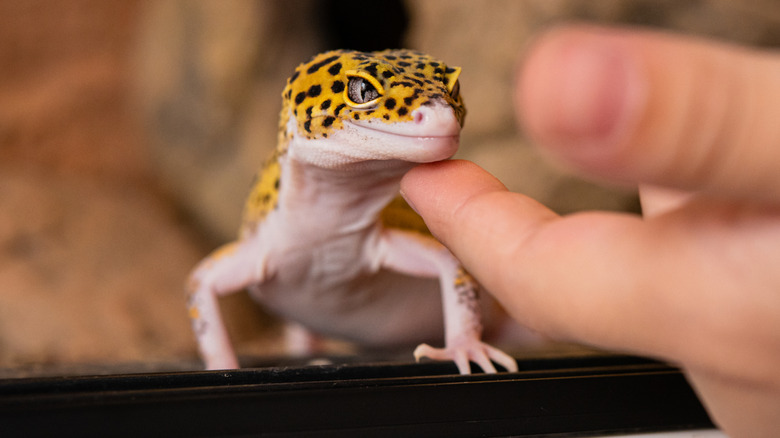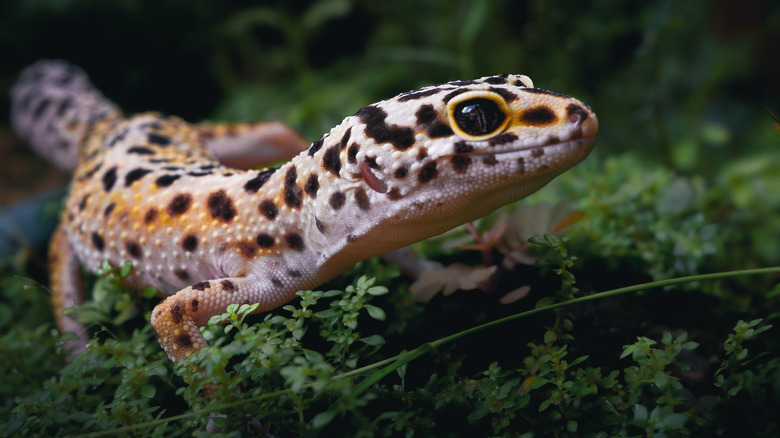A Low-Maintenance Gecko Breed Known For Its Coloration Can Live Up To 20 Years
Jumping into the world of reptiles can be challenging, as everything from their day-to-day needs to their environment and food drastically differs from those of more popular pets. Yet, welcoming a reptile like a gecko into a home can create a unique bonding experience and the chance to observe how it grows and adapts to its environment. For new reptile owners, choosing a more low-maintenance option is often recommended, and one of the most popular choices is the leopard gecko, which gets its name from the leopard species of cats thanks to their shared color patterns.
The leopard gecko's reputation for being low-maintenance comes from various reasons, starting with its cool, gentle, and calm demeanor. It also grows to be manageable for most new owners, around 7 to 10 inches. Feeding a gecko is also minimal; their diet consists of live insects, and they only need to be fed a few times a week. Additionally, managing an enclosure can often be done with spot-cleaning every day days and a thorough cleaning once a month.
With proper care, the leopard gecko can also be a long-term companion. In captivity, a leopard gecko lives between 10 and 20 years. While determining the age of a gecko after reaching full maturity can be challenging, the oldest living leopard gecko on record is Gertrude from Germany, who is said to be over 40 years old and still kicking at the time of writing. With its potential longevity and low maintenance, the leopard gecko can be a perfect longtime companion and provide the first steps toward an owner becoming a gecko enthusiast.
The importance of health and care in a leopard gecko's longevity
Geckos might be low-maintenance, but they still require proper care. For instance, geckos need ample space despite their small size. For an adult, a 20-gallon aquarium with a range of temperatures to suit their needs is recommended. Flooring should consist of materials that are easy to clean and not typically ingested by geckos, such as paper towels, newspapers, or reptile carpet. Moreover, proper hiding places and clean spaces will help create a positive environment. Then, when it comes to food, which is typically insects, it needs to be purchased instead of found in the wild to avoid any potential toxicity.
In addition to conditions that geckos can be predisposed to, such as anorexia, bacterial infections, and Metabolic bone disease, trauma can have long-term effects. Trauma can include a gecko being attacked by other pets, losing its tail after being held by its owner (never hold it by its tail), or falling from heights. Proper handling and staying aware of potential health concerns will allow lizard parents to recognize when medical follow-up is needed. This can include decreased appetite with weight loss, lesions or swelling on the skin, lethargy, difficulties breathing, or diarrhea. If in doubt because of unfamiliarity with a lizard companion, contact a veterinarian to see if an appointment is necessary.
Catering to a leopard gecko's needs will help ensure longevity and good health, not to mention plenty of time to snap photos to share with other reptile pet lovers online. Ultimately, preparation and research remain essential in building that happy home for your new adorable reptile companion that may be a decades-long friendship.

